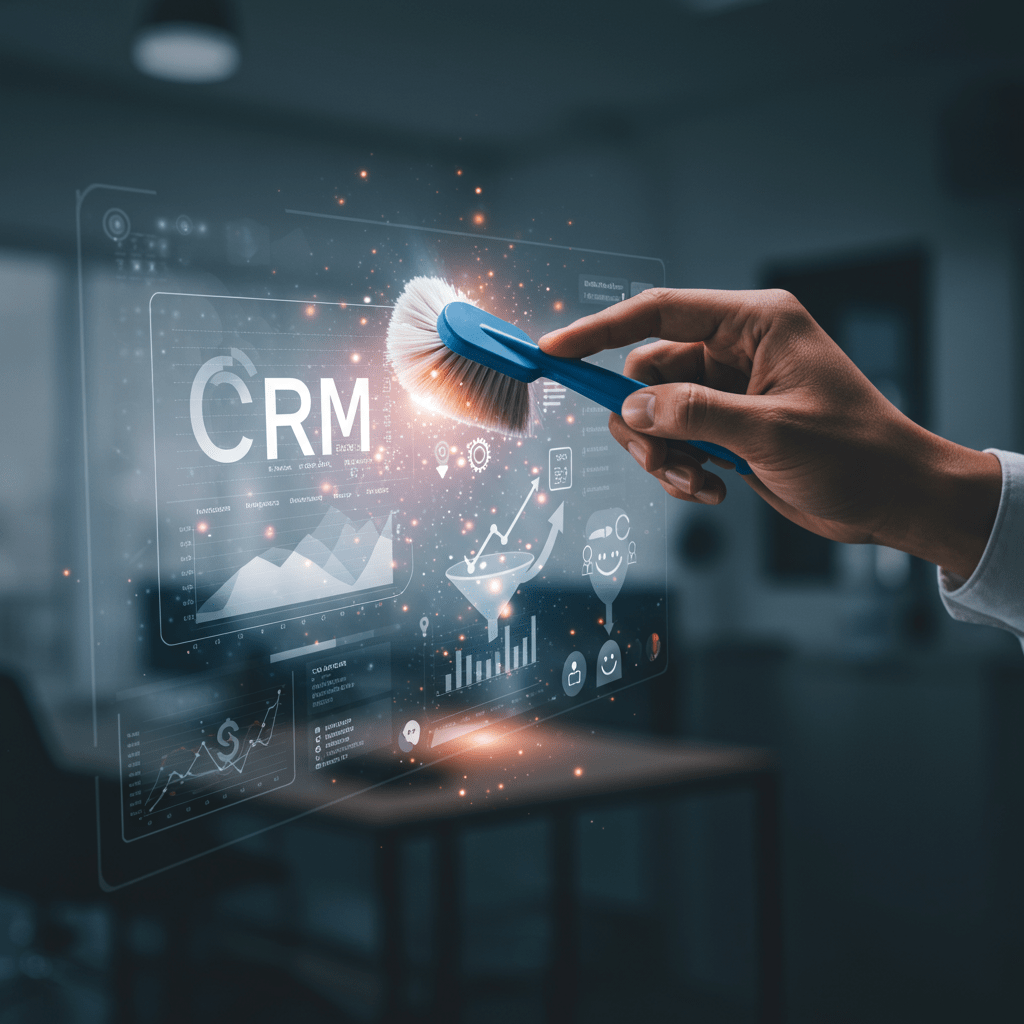Simple CRM Hygiene Checklist: Clean Data, Fewer Duplicates, Faster Deals, Happier Customers

The CRM Paradox: Your Customer Relationship Management (CRM) system is supposed to be your sales and marketing superpower, but a cluttered, inaccurate CRM can quickly become a liability, hindering growth rather than fostering it. A CRM is only as good as the data it holds; poor data quality leads to wasted time, missed opportunities, and ineffective outreach. We define CRM hygiene as the ongoing process of maintaining clean, accurate, and up-to-date data within your CRM system. This article provides a simple, actionable checklist to ensure your CRM remains a powerful tool, not a dusty data graveyard.
Why CRM Hygiene Matters More Than You Think
CRM hygiene is more critical than you might think. Accurate reporting and forecasting are impossible with flawed data; clean data means reliable reports, better sales forecasting, and smarter business decisions. For effective marketing and sales campaigns, sending personalized messages to outdated contacts or irrelevant segments wastes resources and damages your brand. Clean data ensures your campaigns hit the mark. Nothing frustrates a customer more than incorrect information or repetitive inquiries, so improved customer experience is a direct result of good CRM hygiene, enabling personalized, seamless interactions. Sales and marketing teams waste precious time sifting through duplicate records, correcting errors, or dealing with bounced emails, so enhanced productivity comes from a clean CRM that boosts efficiency. Finally, compliance and data security are paramount, as accurate data forms the foundation for data privacy regulations like GDPR and overall data security.
Your Simple CRM Hygiene Checklist
Maintaining a clean CRM involves several key areas. Data accuracy and completeness are foundational. Regularly check and update phone numbers, email addresses, and physical addresses, and be sure to remove invalid or bounced emails. Ensure company names, industries, and employee counts are current. Establish clear guidelines for how data should be entered, such as consistent naming conventions and formatting for phone numbers, to prevent future inaccuracies.
Duplicate record management is another crucial step. Use your CRM’s built-in tools or third-party solutions to regularly scan for duplicate contacts and companies. When identified, carefully merge duplicate entries, ensuring all relevant historical data is consolidated into a single, accurate record. For data cleanup and archiving, delete or archive contacts that are no longer viable leads, such as unsubscribes, cold leads after extensive nurturing, or former employees of client companies. Also, purge any test entries or temporary records from your live CRM.
Opportunity and pipeline management requires diligence. Regularly review and update the status of all sales opportunities, ensuring they accurately reflect where a deal stands. Promptly mark deals as “Won” or “Lost” and add relevant reasons; this feeds into accurate forecasting and analysis. Archive or close opportunities that have been inactive for a predefined period (e.g., 90 days), unless there is a clear, active follow-up plan.
User adoption and training are vital for long-term success. Educate all CRM users on the importance of data hygiene and the correct procedures for data entry and updates, making it part of their ongoing responsibilities. Institute regular team check-ins or reminders about CRM best practices.
Finally, automate where possible to maintain consistency. Use tools that automatically pull in and update contact or company information from public sources, providing automated data enrichment. Implement CRM rules to validate data upon entry, checking for things like email format or required fields. Set up automated workflows to flag stale records, prompt users for updates, or even initiate a merge process for potential duplicates. Platforms like XUNA can integrate with CRMs to automate many follow-up and data capture processes, enhancing overall hygiene by ensuring timely interactions.
Implementing Your Hygiene Routine
Implementing an effective hygiene routine requires consistency. Schedule regular audits, dedicating specific times each week or month for data review and cleanup, which could involve a recurring team meeting or individual tasks. Leverage CRM features by familiarizing yourself with your CRM’s native data management tools, such as duplicate detection, mass editing, and reporting. Consider utilizing third-party tools for specialized data cleansing or enrichment if your CRM’s native features aren’t sufficient for your scale. Most importantly, make it a habit, not a chore, integrating hygiene into daily workflows rather than treating it as a one-off project.
The ROI of a Clean CRM
A clean CRM delivers a clear return on investment. You’ll achieve higher marketing ROI because better segmentation and personalized messaging mean more effective campaigns and a stronger return on your marketing investment. Accelerated sales cycles are also a benefit; sales teams spend less time on administration and more time selling, leading to quicker conversions. Enhanced client retention results from accurate data that allows for proactive, relevant client communication, fostering loyalty and repeat business. With reliable data, leadership gains a true picture of business performance, enabling agile and informed strategic decisions, leading to a clearer business vision.
Your CRM is Your Core Asset: A clean CRM isn’t just about neatness; it’s about operational efficiency, strategic clarity, and sustained business growth. By following a simple, consistent CRM hygiene checklist, you transform your database from a potential burden into a powerful engine for success.
Don’t let dirty data hold you back. Start implementing this CRM hygiene checklist today and unlock the full potential of your customer relationships.








































